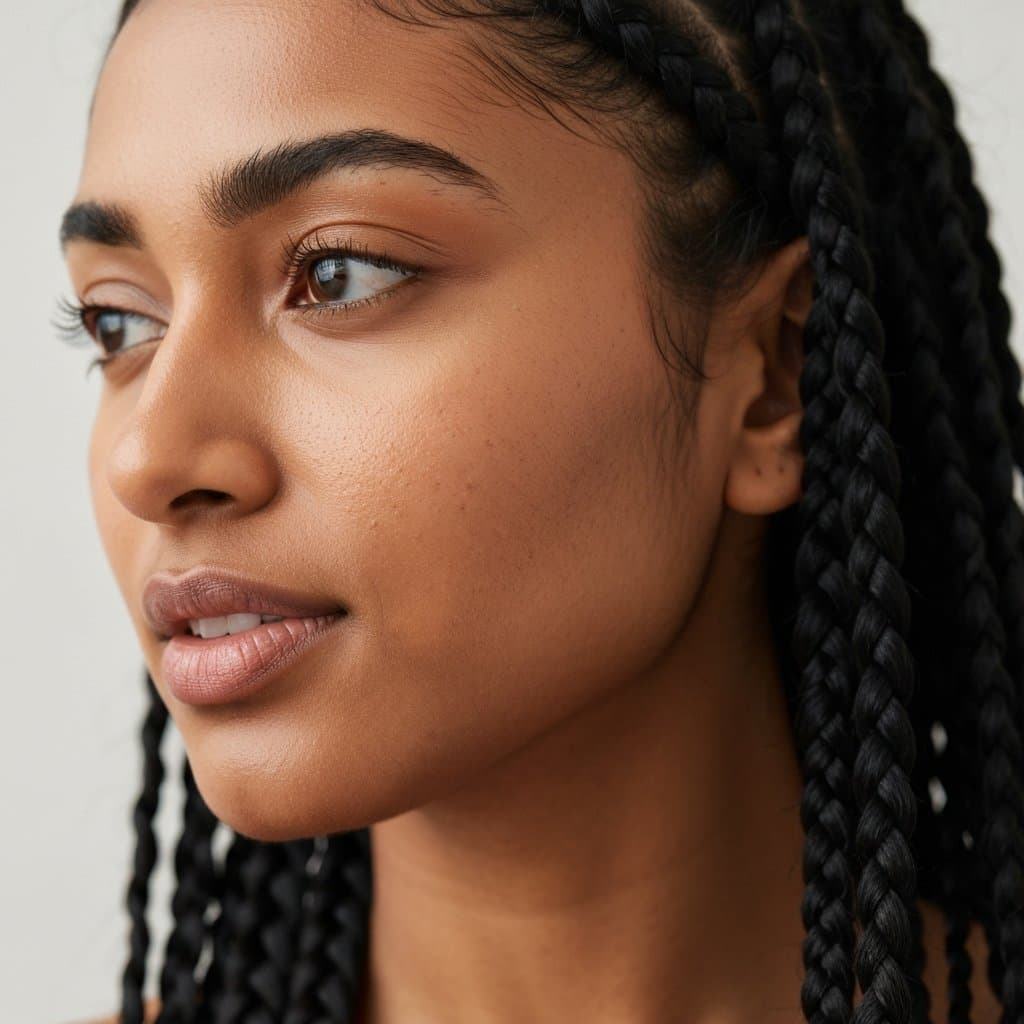Your Next Protective Style: Is It Time for Knotless Braids? | The Ultimate Guide
Your Next Protective Style: Is It Time for Knotless Braids?
The world of protective styling is constantly evolving, with new techniques and innovations emerging to offer more versatility, comfort, and hair health benefits than ever before. For years, traditional box braids have been a go-to style, but a modern successor has taken the spotlight and captured the hearts of hair enthusiasts everywhere: knotless braids. If you've been scrolling through social media, you've undoubtedly seen these seamless, natural-looking braids. But what makes them so special, and is it time for you to make the switch? This comprehensive guide will explore everything you need to know about knotless braids, from their unique installation method to their profound impact on scalp health and styling freedom.
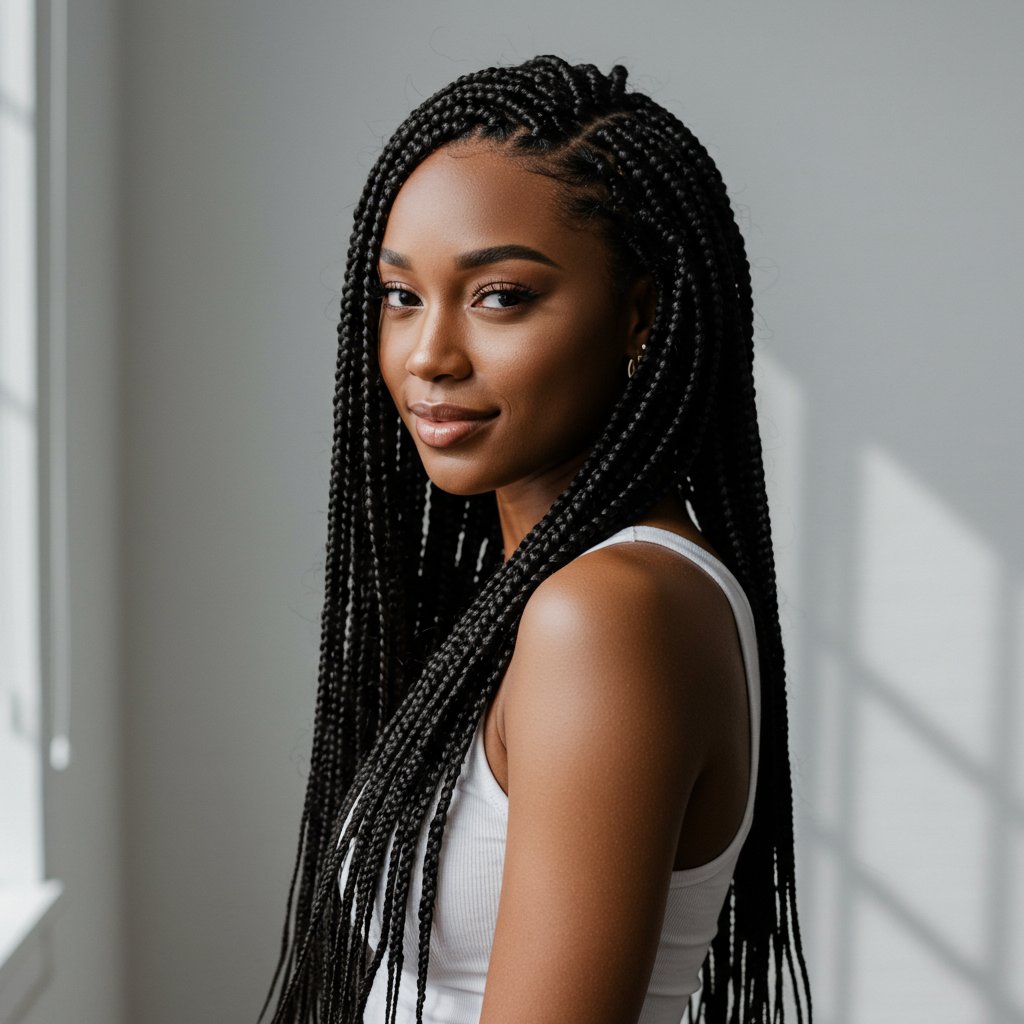
Choosing a protective style is a significant decision. It's an investment in your time, your budget, and most importantly, the health of your natural hair. Knotless braids promise a gentler, more lightweight experience without sacrificing the beauty and longevity you expect from a braided style. We'll delve into a detailed comparison with their traditional counterparts, outline the installation process, provide expert maintenance tips, and help you determine if this revolutionary style is the perfect match for your hair goals and lifestyle. Get ready to discover why knotless braids might just be the answer you've been looking for in your protective style journey.
What Exactly Are Knotless Braids? A Modern Twist on a Classic
At first glance, knotless braids might look similar to the classic box braids we know and love. However, the true innovation lies in the technique, specifically at the root of the braid. The defining characteristic of knotless braids is the installation method, known as the "feed-in" technique. Unlike traditional box braids, which start with a small knot created by wrapping braiding hair tightly around a section of your natural hair at the scalp, the knotless method begins with your own hair.
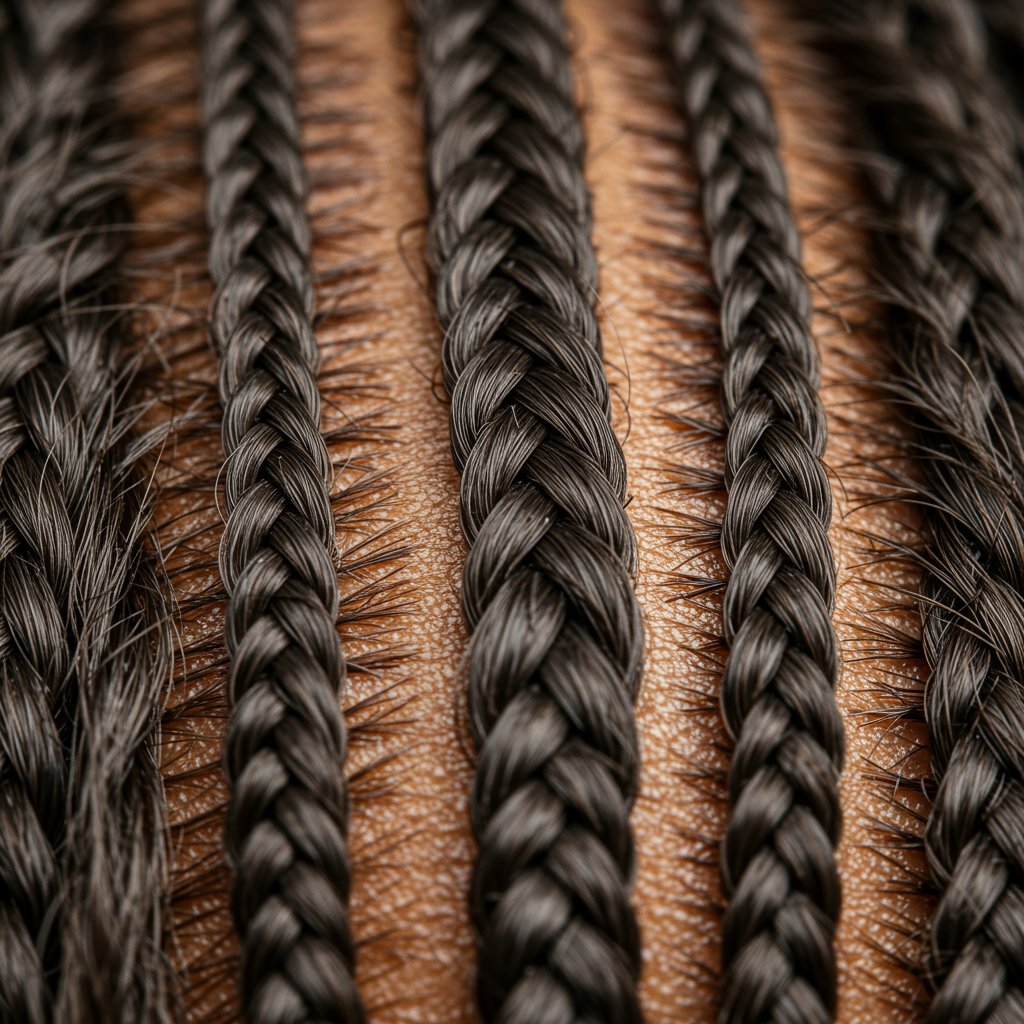
The stylist starts by braiding a small section of your natural hair first. Then, as they continue down the shaft, they gradually and seamlessly feed in small pieces of braiding hair. This process creates a smooth, flat transition from your scalp to the braid, completely eliminating the bulky and sometimes painful knot at the base. The result is a braid that lies flat against the head, offering a more natural appearance and a significantly lighter feel from the very first moment.
This technique is more than just an aesthetic upgrade; it's a fundamental shift towards prioritizing hair and scalp health. By avoiding the initial knot, the tension on the hair follicles is dramatically reduced. This simple change addresses many of the common complaints associated with traditional braiding, such as scalp tenderness, tension headaches, and the risk of traction alopecia. Knotless braids represent a thoughtful evolution in braiding, blending timeless style with a modern, health-conscious approach.
The Core Difference: Knotless Braids vs. Traditional Box Braids
To truly appreciate the benefits of knotless braids, it's essential to understand how they stack up against traditional box braids. While both styles protect natural hair and offer incredible versatility, their core differences in installation lead to vastly different experiences in terms of comfort, appearance, and long-term hair health. The primary distinction is the base of the braid and the level of tension applied to the scalp.
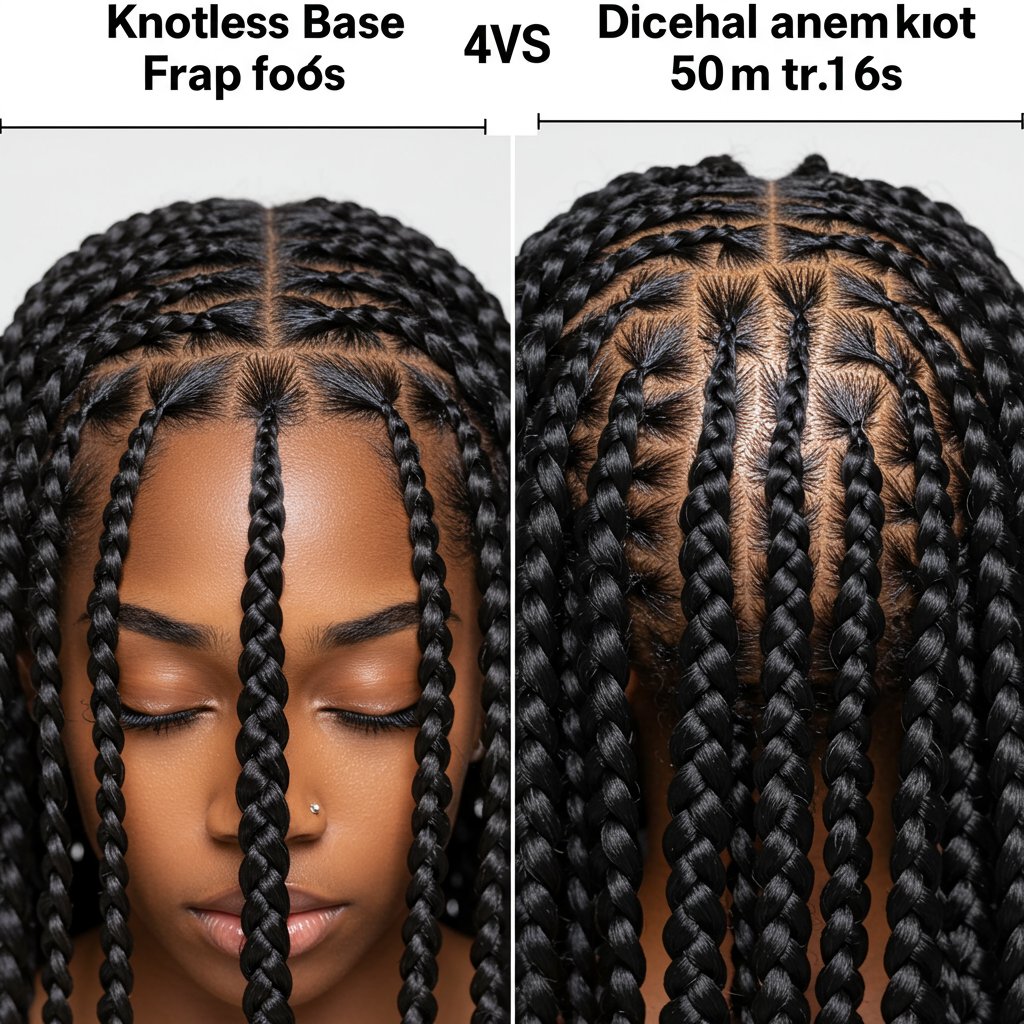
Tension and Comfort
Traditional box braids begin with an anchor knot. This knot, formed by looping the extension hair around the base of the natural hair section, creates immediate, high tension on the hair follicle. This is often the source of post-installation soreness, bumps, and even headaches. Knotless braids, by contrast, distribute tension much more evenly. Because the braid starts with your own hair and extensions are fed in gradually, the pull on the scalp is minimal. This means no initial pain, immediate styling flexibility (you can put them in a ponytail on day one!), and a significantly lower risk of follicle damage.Appearance and Movement
The anchor knot of box braids creates a raised, slightly bulky look at the scalp. While this is a classic aesthetic, it doesn't offer the same natural appearance as knotless braids. The feed-in method allows knotless braids to lay completely flat, creating a seamless look as if the braids are growing directly from the scalp. This flat base also gives the braids more natural movement and fluidity. They are often described as being more lightweight and less rigid, allowing for more comfortable and versatile styling from the moment you leave the salon chair.The Health-First Advantage: A Game-Changer for Your Scalp
The most celebrated benefit of knotless braids is their positive impact on hair and scalp health. For many, protective styles are a means to an end—a way to promote hair growth by minimizing daily manipulation. However, if the style itself causes stress and damage, it defeats the purpose. This is where knotless braids truly shine, offering a genuinely protective experience that nurtures your hair from the root.
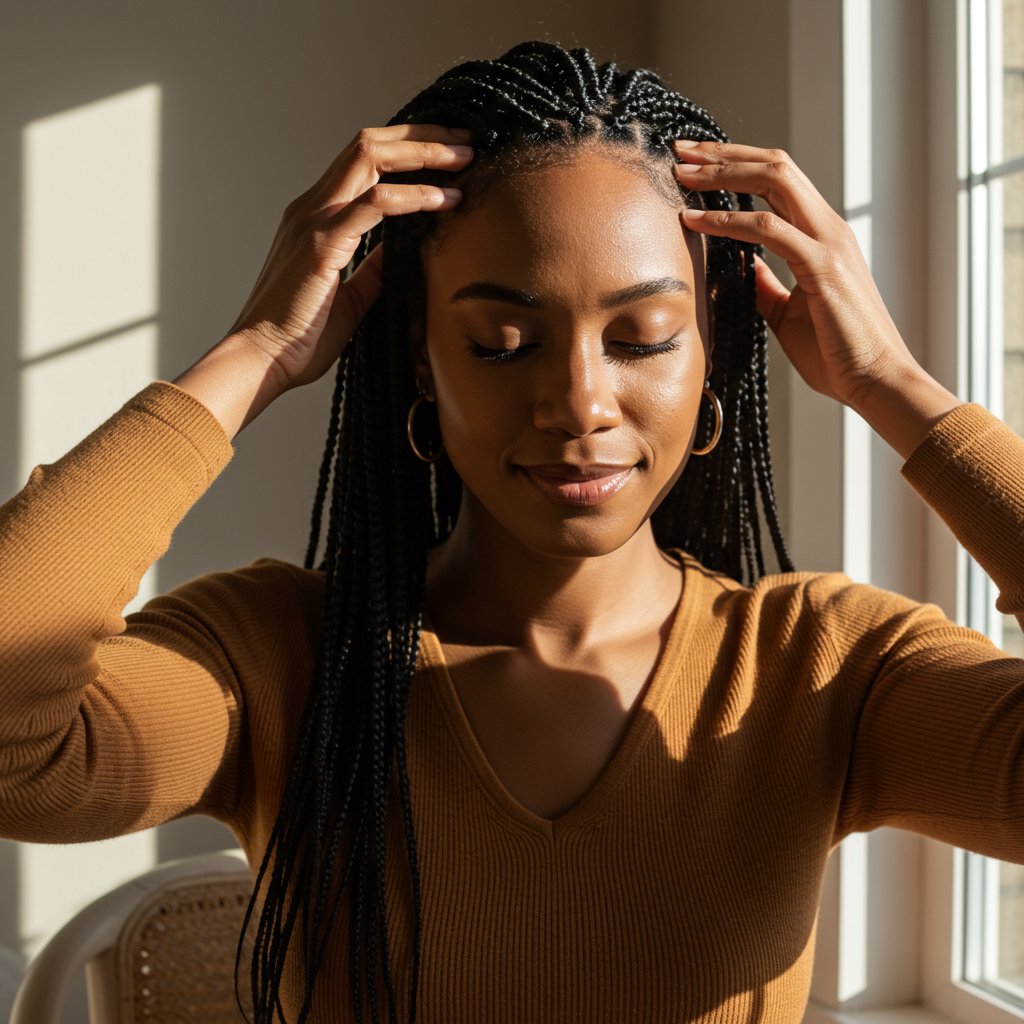
One of the most significant risks associated with tightly installed braids is traction alopecia, a form of hair loss caused by constant pulling on the hair follicles. The high-tension knot at the base of traditional box braids is a primary culprit. By eliminating this knot, knotless braids drastically reduce the risk of this type of hair loss. The gentle, gradual feed-in method is kinder to your edges and overall scalp, making it a superior option for those with fine hair, sensitive scalps, or concerns about thinning.
Furthermore, the reduced tension minimizes scalp inflammation and irritation. Many people experience tenderness, itching, and even small pustules (traction folliculitis) after getting traditional braids. With knotless braids, these issues are far less common. The style is comfortable from day one, allowing your scalp to remain calm and healthy. This healthier scalp environment, free from excessive stress and irritation, is more conducive to retaining length and promoting healthy hair growth.
The Aesthetic Appeal: Versatility and a Natural Look
Beyond the health benefits, knotless braids offer a distinct aesthetic that many find more appealing and versatile than traditional styles. The seamless transition from natural hair to extension creates an effortlessly chic and sophisticated look. The braids appear less like an addition and more like an extension of your own hair, offering a level of subtlety and elegance that is hard to achieve with knotted styles.
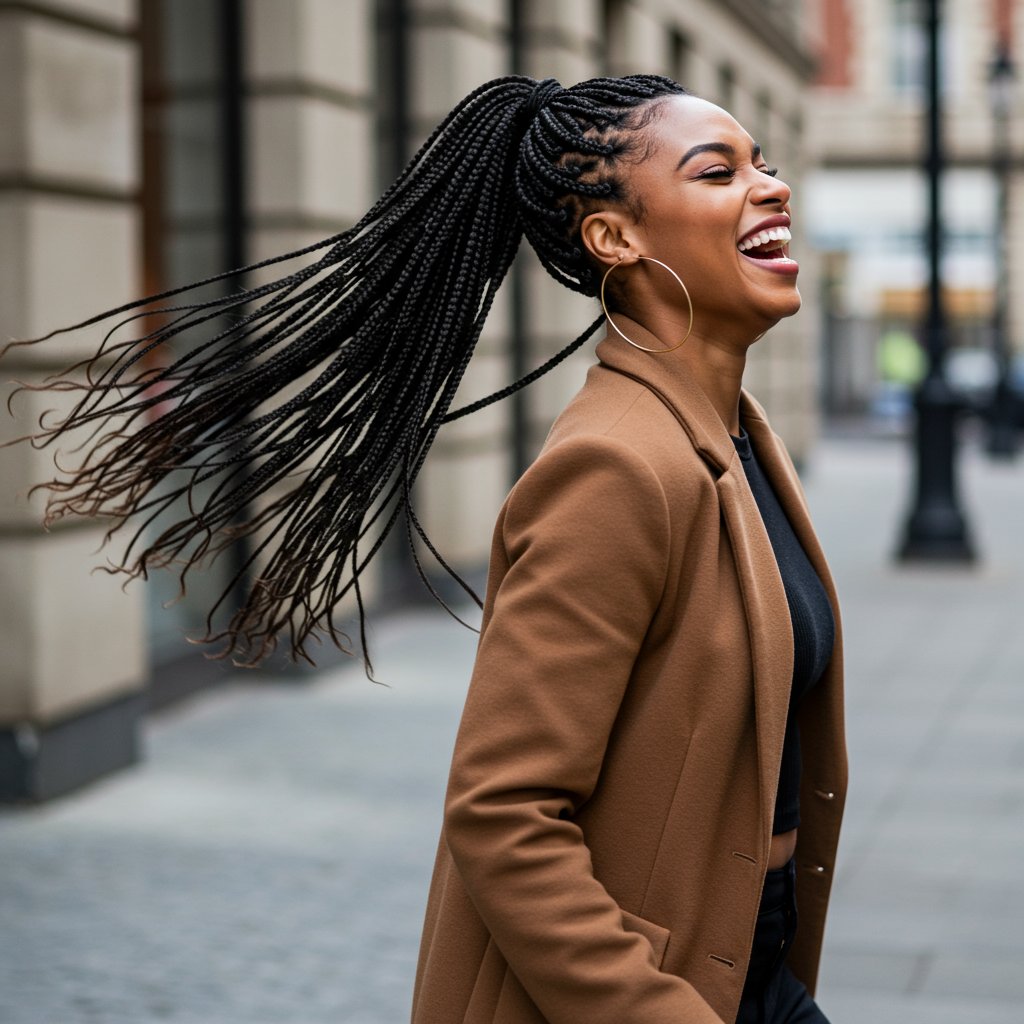
This natural appearance is complemented by unparalleled styling flexibility. The absence of a rigid knot at the base means the braids are pliable and easy to manipulate immediately after installation. High ponytails, sleek buns, intricate updos, and half-up styles can be achieved without the usual waiting period for the braids to "loosen up." This immediate versatility is a major draw for those with active lifestyles or who enjoy switching up their look frequently.
Moreover, the lightweight nature of knotless braids contributes to their overall comfort and aesthetic. Because the weight of the extension hair is distributed more evenly down the hair shaft rather than being concentrated at the root, the braids feel less heavy. This makes wearing them for extended periods more comfortable and reduces the strain on your neck and scalp, especially with longer or thicker braids.
The Installation Process: What to Expect in the Salon Chair
Understanding the installation process for knotless braids can help you prepare for your appointment and appreciate the artistry involved. While the end result is effortless, the technique requires skill, precision, and patience from the stylist. One of the key differences you'll notice is the time commitment and, consequently, the cost.
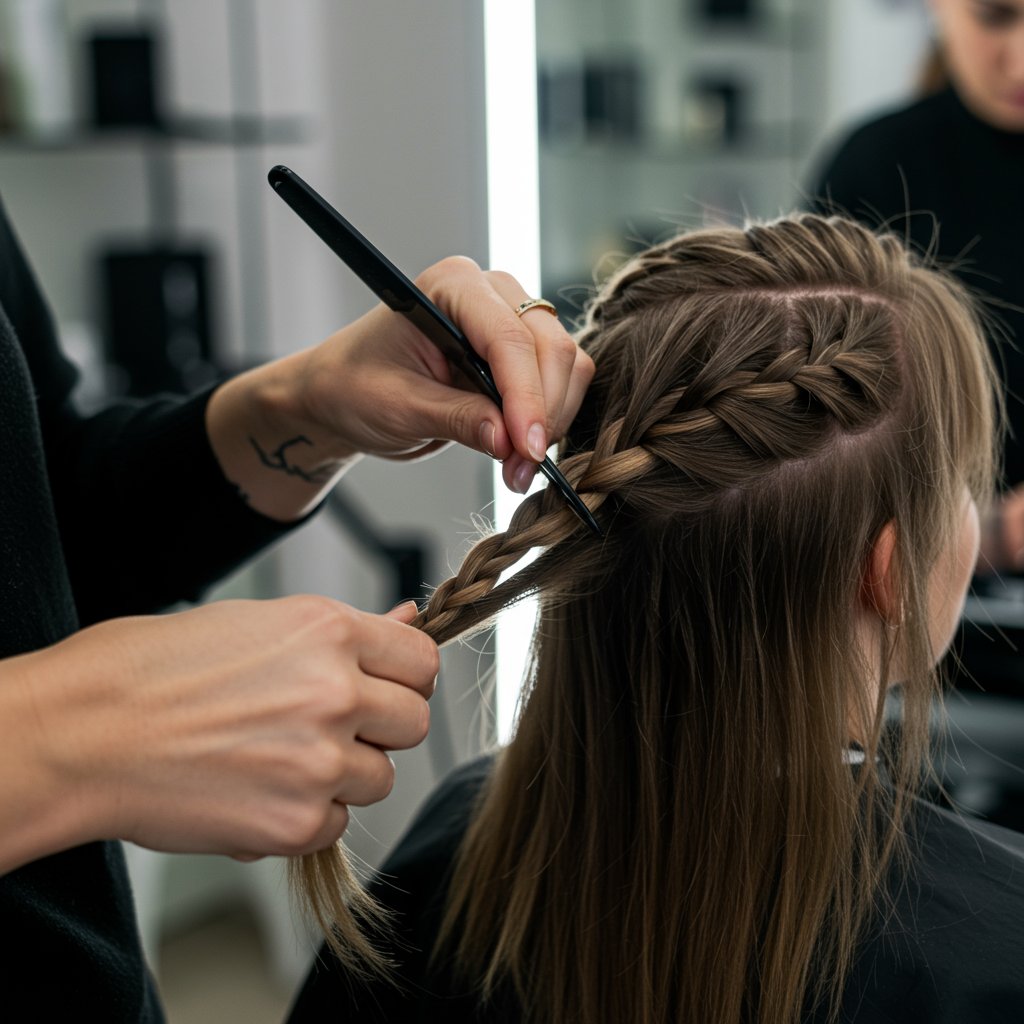
Typically, installing knotless braids takes longer than traditional box braids. The meticulous process of starting with natural hair and gradually feeding in small pieces of extension hair for each braid is more labor-intensive. Depending on the desired size and length of the braids, as well as the density of your hair, an appointment can last anywhere from 5 to 9 hours, or sometimes longer. It's crucial to book a consultation with an experienced stylist who can provide an accurate time and cost estimate based on your specific hair and desired outcome.
During the appointment, your hair will be freshly washed, conditioned, and blow-dried or stretched for a smooth foundation. The stylist will then part your hair into clean sections. For each braid, they will start by braiding your natural hair for a few stitches before beginning to add small, pre-stretched pieces of braiding hair. This process is repeated until the desired thickness is achieved, and the braid is completed to the end. The precision required means choosing a stylist who specializes in this technique is paramount to achieving the best, longest-lasting results.
Caring for Your Investment: Knotless Braids Maintenance
Proper maintenance is key to extending the life of your knotless braids and keeping your natural hair healthy underneath. With the right care routine, you can typically wear knotless braids for 4 to 8 weeks. Neglecting them can lead to product buildup, dryness, and frizz, diminishing the style's beauty and protective qualities.

Scalp Cleansing and Moisturizing
Keeping your scalp clean is non-negotiable. Use a gentle, sulfate-free shampoo diluted with water in an applicator bottle to easily apply it directly to your scalp. Gently massage with the pads of your fingertips (not your nails) to lift dirt and buildup, then rinse thoroughly. Follow up by applying a lightweight leave-in conditioner or braid spray to your hair to keep it hydrated. Focus on moisturizing your scalp every few days with a light oil, such as jojoba or almond oil, to prevent dryness and flaking.Nighttime Protection
To protect your braids from frizz and friction while you sleep, always wear a satin or silk scarf, bonnet, or use a satin pillowcase. This is one of the most effective ways to preserve the neatness of your parts and the smoothness of the braids. It helps to retain moisture in your hair and prevents the braids from looking fuzzy prematurely.Refreshing Your Style
After a few weeks, you may notice some flyaways or new growth. You can refresh the look of your braids by applying a small amount of mousse or styling foam and smoothing it down the length of the braids. Tying a scarf around your hairline for about 30 minutes after application can help lay down any frizz. For your edges, a non-flaking edge control can keep your hairline looking polished and neat.Are Knotless Braids Right for You? Factors to Consider
While knotless braids offer a wealth of benefits, they may not be the perfect fit for everyone. Before booking your appointment, it's wise to consider a few personal factors to ensure they align with your hair type, lifestyle, and budget. Making an informed decision will lead to a more satisfying and successful protective styling experience.
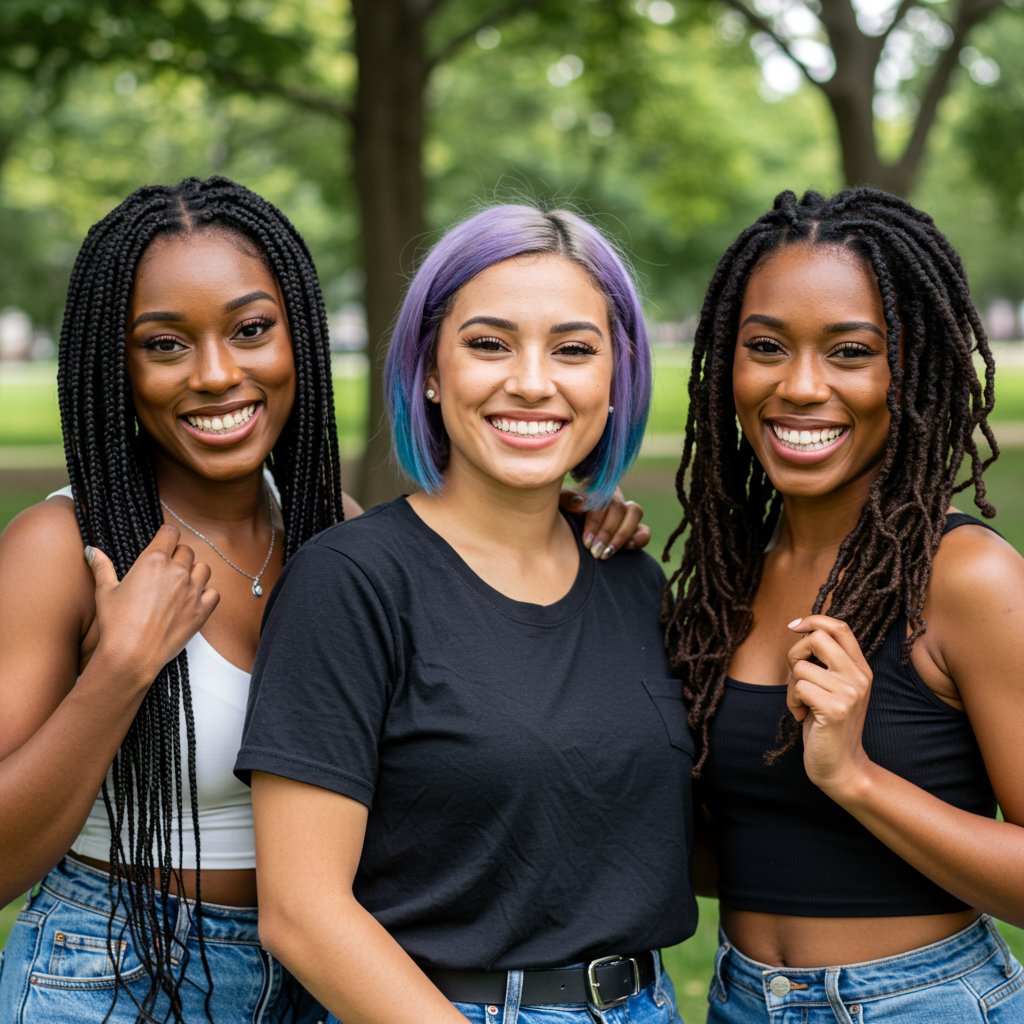
First, consider your hair's density and length. Knotless braids can be done on most hair types, but the technique works best on hair that is at least two to three inches long. This provides enough natural hair to start the braid securely before feeding in extensions. If your hair is very fine or low-density, you might opt for smaller braids to ensure the sections are robust enough to support the extension hair without causing stress.
Your budget is another significant consideration. Due to the increased time and skill required for installation, knotless braids are generally more expensive than traditional box braids. It's important to view this as an investment in your scalp's health and the longevity of the style. Finally, think about your lifestyle. If you are highly active or swim frequently, the lightweight and flexible nature of knotless braids is a huge plus. They are comfortable for workouts and dry faster than bulkier styles, making them a practical and beautiful choice for almost any routine.
Pro-Tips for the Best Knotless Braid Experience
- Choose an Experienced Stylist: This technique requires expertise. Look at portfolios and reviews to find a braider who specializes in knotless braids.
- Communicate During Installation: If you feel any pulling or discomfort, speak up immediately. A proper knotless installation should be completely painless.
- Use Pre-Stretched Hair: This saves time and results in a sleeker, less bulky finish at the ends of the braids.
- Don't Go Too Small: While micro braids can be beautiful, extremely small knotless braids can still put stress on fine hair. Opt for a size that suits your hair density.
- Schedule a Takedown: Avoid keeping the style in for too long. Sticking to the 4-8 week window prevents matting and allows you to properly care for your natural hair.
Frequently Asked Questions About Knotless Braids
1. Do knotless braids really last as long as box braids? Yes, with proper care, knotless braids can last just as long, typically 4 to 8 weeks. Because they start with your natural hair, new growth can sometimes be more noticeable, but a good maintenance routine can keep them looking fresh.
2. Are knotless braids suitable for fine or thin hair? Absolutely. In fact, they are often recommended for finer hair types because they place significantly less tension on the hair follicles compared to traditional box braids, reducing the risk of breakage and traction alopecia.
3. Can I wash my hair with knotless braids? Yes, you can and should wash your hair and scalp while wearing knotless braids. It's best to do so every 2-3 weeks using a diluted shampoo and focusing on the scalp. Be gentle to avoid creating unnecessary frizz, and ensure they dry completely to prevent mildew.
4. Why are knotless braids more expensive? The higher price point is due to the increased time and skill level required for the installation. The meticulous feed-in technique is more labor-intensive for the stylist, which is reflected in the cost.
5. Can I get knotless braids wet, like at the pool or beach? You can, but it's important to care for them afterward. Chlorine and saltwater can be drying. Always rinse your braids thoroughly with fresh water after swimming and apply a leave-in conditioner to restore moisture. Keep in mind that wet braids can be heavy, so be mindful of the extra weight on your scalp.
6. What's the best way to take down knotless braids without causing damage? Be patient. Start by cutting the braid a bit longer than your natural hair. Use a rat-tail comb to gently unbraid the extension hair. Apply a conditioner or oil to help with detangling as you go. It's crucial to detangle each section thoroughly before washing your hair.
The Verdict: A Healthier, More Modern Protective Style
Knotless braids have rightfully earned their place as a top-tier protective style. They offer a sophisticated, natural aesthetic while championing the health of your hair and scalp. By eliminating the tension-causing knot, this innovative technique provides a comfortable, lightweight, and versatile experience from day one. While the initial investment of time and money is higher than that of traditional box braids, the benefits—reduced risk of hair loss, immediate styling freedom, and superior comfort—are undeniable.
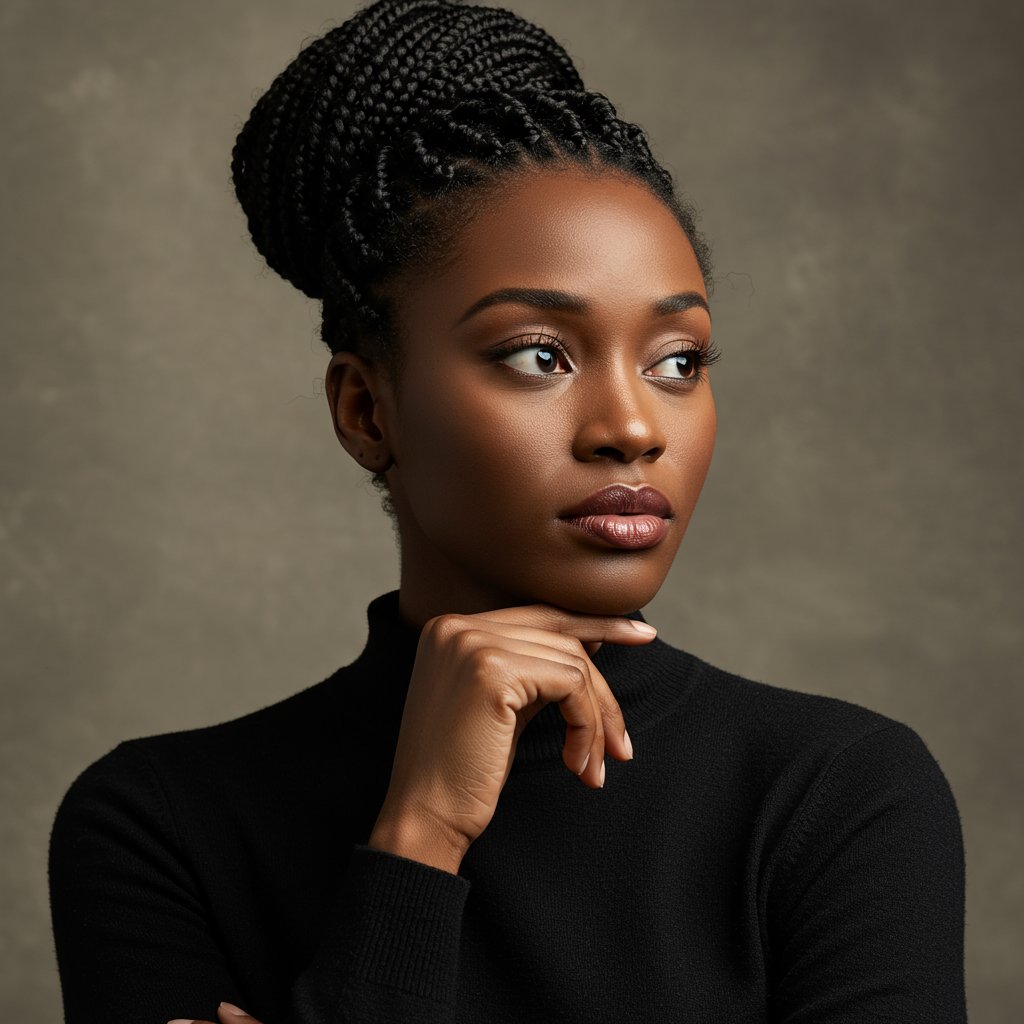
If you're seeking a protective style that doesn't force you to choose between beauty and health, it is absolutely time to consider knotless braids. They represent a significant step forward in the art of braiding, putting the long-term integrity of your natural hair at the forefront. To ensure the best possible results, seek out a skilled, professional stylist who can customize the style to your hair's unique needs. Your scalp will thank you, and you'll walk away with a beautiful, long-lasting style that feels as good as it looks.

